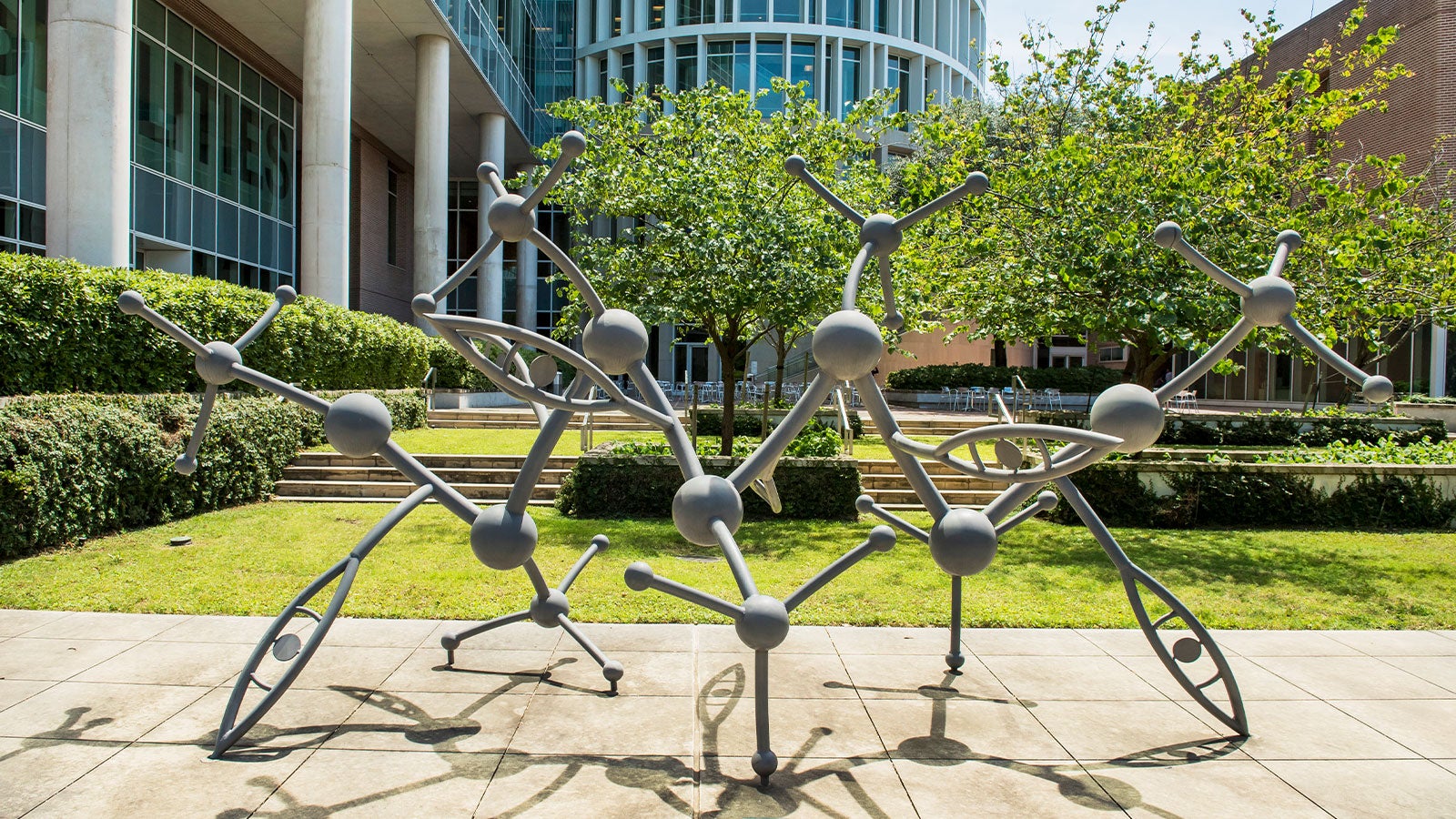“When we started we knew very little about it,” said Behnaam Aazhang. “Now we know what we don’t know. There are a lot of open problems.”
Aazhang is talking about the human brain. As founding director of the Rice Neuroengineering Initiative (RNEI), he heads a growing faculty of researchers dedicated to understanding the brain, and restoring and extending its capabilities.
“We happen to be across the street from the largest medical center in the world. We work with clinicians and their patients to study neural function and create new ways to diagnose, treat and even prevent disorders ranging from Alzheimer’s, epilepsy and Parkinson’s to chronic pain and depression,” said Aazhang, J.S. Abercrombie Professor of Electrical and Computer Engineering (ECE).
Founded in 2018, the RNEI now occupies some 25,000 square feet on the eighth and ninth floors in the BioScience Research Collaborative. It started with two faculty members and will soon have a core faculty of 16, representing four departments in the school of engineering. Last year, three new faculty members were added:
Jessica Butts, assistant professor of bioengineering; Valentin Dragoi, professor of ECE at Rice, professor of neuroscience at Weill Cornell Medical College and scientific director of the Methodist/Rice Center for Neural Systems Restoration; and Benjamin Hayden, adjunct professor of ECE and linguistics at Rice, and professor of neurosurgery at Baylor College of Medicine.
Joining the faculty effective July 1 were: Christina Tringides, assistant professor of materials science and nanoengineering (MSNE); Scott Keene, assistant professor of MSNE.
The new faculty hires in 2025 will be Nishal Shah, assistant professor of ECE, and Keya Ghonasgi, assistant professor of mechanical engineering.
“The faculty members we have been able to hire have exceeded our expectations. We have truly become a world-class institution,” Aazhang said.
When the initiative launched six years ago, the university invested $50 million in it, a figure that included the cost of hiring five tenured/tenure-track faculty members.
Since the 2020-21 academic year, core faculty at the RNEI have submitted a total of 241 grant proposals for a total of $264 million dollars. Of this, the faculty have secured $63 million in funding.
Earlier this year, for instance, Motif Neurotech, a neurotechnology company developing minimally invasive bioelectronics for mental health formed through the Rice Biotech Launch Pad, closed an oversubscribed Series A financing round of more than $18 million. The money is being used to advance development of Motif’s lead product, the DOT microstimulator, a miniature brain pacemaker designed to stimulate the brain to restore healthy circuit activity for treating mental-health disorders.
The first condition Motif is pursuing with the device is treatment-resistant depression, a form of major depressive disorder.
“Minimally invasive bioelectronics are the future of mental-health treatment,” said Jacob Robinson, professor of ECE and of bioengineering at Rice, and CEO and founder of Motif Neurotech. “Thirty percent of patients with depression don’t respond to two or more medications, and there is a significant need for additional treatment options that are effective and accessible.”
In addition, Rice and Houston Methodist launched a joint interdisciplinary center for neuroscience research and treatment innovation, housed at Houston Methodist.
Starting in May 2025 the InterfaceRice conference becomes InterfaceNeuro, a partnership between Georgia Tech’s Department of Electrical and Computer Engineering and RNEI to share an annual conference that brings together researchers, clinicians and technologists in the field.
“We are also looking abroad for future collaborations. Our researchers are working closely with the Paris Brain Institute, the University of Edinburgh, the Fulbright Finland program and the India Institute of Technology Kanpur. We are embracing Rice as a global institute for higher education and for research,” Aazhang said.

